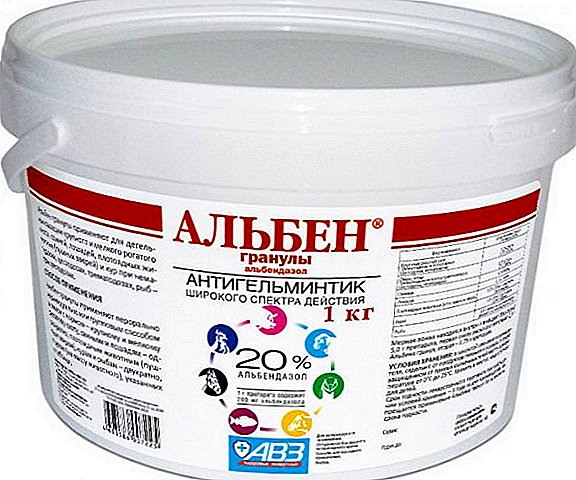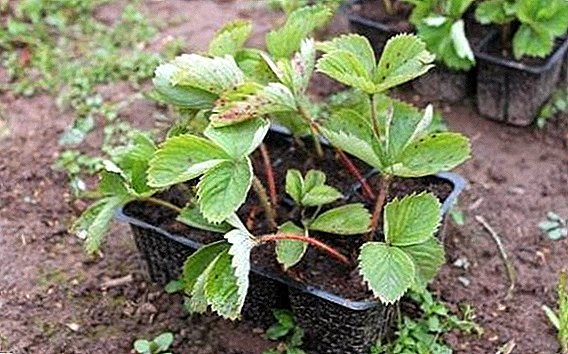 The use of copper sulphate is so diverse that its popularity does not fall. But it will be beneficial only if it is applied correctly, otherwise it will not be possible to avoid intoxication. Consider the cases in which this tool will harm a person.
The use of copper sulphate is so diverse that its popularity does not fall. But it will be beneficial only if it is applied correctly, otherwise it will not be possible to avoid intoxication. Consider the cases in which this tool will harm a person.
What is the harm of copper sulfate for the human body?
Copper sulfate is a hygroscopic (moisture absorbing) powder of bright blue or blue crystals. The substance is toxic, 4th class of danger, is harmful if mucous membranes are affected and ingested.
Compliance with safety rules is appropriate and necessary here, as with careless use even death is possible. Extremely dangerous for fish. Anhydrous copper sulfate (CuSO4) when dissolved in water (H2O) forms crystals of copper vitriol (CuSO4 · 5H2O).
Find out how and what used copper sulphate and Bordeaux mixture.
 In scientific articles, these crystals are called blue pentahydrate. The reaction is accompanied by a thermal effect. Copper sulfate is used as an antiseptic, copper-sulfur fertilizer, a fungicide, a component of mineral paints and electrolytic baths, a drug in veterinary medicine and medicine.
In scientific articles, these crystals are called blue pentahydrate. The reaction is accompanied by a thermal effect. Copper sulfate is used as an antiseptic, copper-sulfur fertilizer, a fungicide, a component of mineral paints and electrolytic baths, a drug in veterinary medicine and medicine.The action is based on the reaction of copper ions to the cells of the fungus or bacteria, causing irreversible changes in them.
Did you know? In one of the hungry provinces of Ireland, a reporter for a local newspaper accidentally noticed that potato crops near a copper smelter are practically healthy, and in other places they look like a rotting swamp. Thus, the beneficial properties of copper sulfate for agriculture were discovered.
Consequences of intoxication
With an incorrect diagnosis of symptoms of copper sulfate poisoning as with SARS (most often). Treatment is postponed, the disease becomes chronic. What is fraught with:
- hair color modification;
- anomaly of the kidneys, liver, stomach;
- failure of the nervous system;
- gum inflammation;
- the transformation of the color of the whites of the eyes and skin on greenish;
- deformation of teeth, nasal septum, skin tissue.
 The consequences are extremely serious and require long-term medical intervention.
The consequences are extremely serious and require long-term medical intervention.Learn how fungicides are used - Scor, Quadrice, Abiga-Peak, Brunka, Ordan, Thanos, Switch, Antracol, Acrobat TOP, Albit, Glyocladin, Horus, DNOC, Kuproksat, Fitosporin, Azofos.
Causes of poisoning
Poisoning is carried out by the appearance in the body of both solution and copper dust. The most incredible source may be copper-containing utensils. Dust resulting from grinding copper-containing surfaces also causes poisoning if the respiratory protection rules are not followed.
Anti-burn healing compresses while ignoring the norms of copper-containing components can lead to undesirable consequences. But the main causes of poisoning are unauthorized changes in the dosage of the drug, lack of protective equipment, complete or partial disregard for the conditions of storage and use. 
Important! The solution made in accordance with the instructions, safe and most effective.Read the instructions and follow its recommendations.
Symptoms and signs of poisoning
The main symptoms of copper sulfate poisoning are:
- if swallowed, vomiting occurs (bloody or blue), abdominal pain, retching, fatigue, cramps, muscle pain, metallic taste and frequent heartbeat;
- Allergic rashes and irritation are permissible upon contact with skin.
- inhalation may cause coughing, sneezing, headache, fever, redness of the whites of the eyes, malfunction of the respiratory tract.
The first signs of intoxication may appear after 4 hours, and sometimes - two days after the interaction with the substance. Urgent medical advice and assistance is needed!
The degree of intoxication depends on the age, weight, the presence of other diseases in humans, susceptibility to certain toxins. 
First Aid
Before the arrival of the doctor, the arrival of the ambulance is necessary to know the order of basic actions.
- In case of ingestion through the mouth, wash the stomach, drink 1 tablespoon of activated carbon with a glass of water, take a laxative (sodium sulfate, magnesium) and a considerable amount of water.
- In case of skin lesions, wash off the remains of vitriol under running water.
- Inhalation of vapors to get into the fresh air, rinse the nasal passages and mouth thoroughly, take a diuretic agent and a large amount of water (at a temperature - febrifuge).
Important! Increases the severity of poisoning the use of milk and butter, as the poison is well dissolved in fats!Further treatment will be prescribed by a medical professional.
Poisoning: what to do
Medical reference books claim that copper sulphate in the amount of more than 0.6 g threatens with intense vomiting. A dose of more than 2 g leads to severe poisoning with a fatal outcome (in some cases). This refers more often to the casual, careless use of copper sulfate orally.  Each of us is faced with the need to use this substance. The main thing is to adhere to the norms and rules of safety. Do not use copper sulphate in premises with food. Must be stored in tightly closed containers away from children.
Each of us is faced with the need to use this substance. The main thing is to adhere to the norms and rules of safety. Do not use copper sulphate in premises with food. Must be stored in tightly closed containers away from children.
With acute symptoms (vomiting, allergic reactions, fever), an ambulance call is inevitable. Only she will quickly deliver to the intensive care unit of the local hospital for examination by a toxicologist and resuscitator.
In case of mild poisoning (refusal from hospitalization), the chief specialist will be the district therapist (family doctor), who will issue a hospital, send him for tests, prescribe medication, and consult with a specialist.
Did you know? Until now, copper sulfate is listed as an antidote according to the classification of the World Health Organization. Apparently, due to the long time used as a drug that causes vomiting. So poison is an antidote at the same time.
Home Treatment
Treatment at home is possible only with a weak poisoning with copper sulfate and consists in drinking abundantly, fresh air, following the recommendations of the therapist.  If complications have arisen that have caused the disruption of the work of the internal organs, the specialist will treat these manifestations. Therapy should be carried out exclusively in a medical institution under the supervision of a doctor.
If complications have arisen that have caused the disruption of the work of the internal organs, the specialist will treat these manifestations. Therapy should be carried out exclusively in a medical institution under the supervision of a doctor.
Find out what fungicides are used for grapes and houseplants.
Safety regulations
The basics of safety are contained in the following rules:
- Before starting the preparation of the solution (or working with the substance), put on rubber gloves, fasten a gauze bandage or respirator, wear protective glasses, choose overalls with long sleeves;
- during work with the drug to exclude the likelihood of drops of the solution in the eyes and mucous membranes, it is forbidden to take water, food, you must stop smoking;
- after treatment, ventilate the room, take a shower, rinse your mouth, nose, eyes with running water, go to fresh air.

Prevention with frequent work with the tool
In industrial workshops, copper sulphate poisoning is avoided by adhering to safety standards and rules. After work, you must take a shower and change clothes. At home, storage of the substance in a closed container is required, away from children, in a room without food, and well ventilated.
The use of copper sulfate is resorted to with the symptoms of powdery mildew, nodule, septoria, root rot, black spot, late blight.
During the work to use gloves, points, a respirator, to observe safety rules. After work, carry out wet cleaning, change clothes, perform water treatments. It is recommended to drink plenty of water. If you feel unwell, consult a doctor.
Inorganic copper sulphate is in demand and popular due to its low price and less danger to the environment than the latest development of toxic chemicals from organic components. However, in order not to have health problems, you must adhere to the rules of personal safety.












